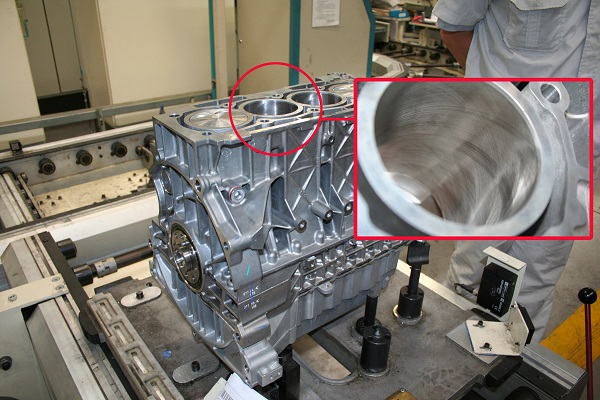Honing is a well - known machining process of the hard tooth surface. Honed gears improve noise and wear characteristics.
Honed gears reduce noise and extend service life by changing the surface structure of the teeth. The honed gear surface is similar to the surface structure of fishbone spurs, which is conducive to the formation of a layer of lubricating oil film on the surface from the end of the tooth root surface to the pitch circle diameter, which is conducive to the generation of noise suppression. This surface structure is created by a special process that causes the honing tool to roll into contact with the workpiece in the appropriate direction. The combined velocity component ACTS on the tooth surface to produce an axial cutting velocity component so that the abrasive particles of the grinding tool keep in contact with the whole tooth surface.

The Advantages Of The Honing Process
The advantages of the honing process can be summarized as follows: it is an economical and feasible process. When examining the economic feasibility of a workpiece processing process, the entire process chain must be considered. This is especially important for hard gear finishing because pre-finishing is extremely important. Generally, the increase in machining costs is not proportional to the size of the workpiece hardness.
Therefore, a good green processing method is needed in most cases, which can effectively process the hard tooth surface and minimize the deformation effect of heat treatment. This will create an ideal hard tooth surface finishing conditions. In addition to the improvement of the preprocessing method, the hard tooth surface processing method not only needs a large amount of excision but also needs a large size change, so that the material can be excised reliably and cheaply. This has led to a way to turn ideas into reality: honing directly, when the workpiece is heat-treated.
In the past, the honing process required the use of synthetic resin combined with alumina or hard alloy grinding tools, or diamond grinding tools or composite molds.
When the direct honing process is used for preprocessing, not only a high cutting rate is obtained, but also the expected quality requirements are achieved economically and with high repetition accuracy. The need for faster and more economical processing often goes hand in hand with the need to improve processing repeatability and quality and to make machine tools as easy to operate as possible.

For process control, there are theoretically several possibilities for two-sided contact, single-line contact, and single-point contact, as well as work-piece driven synchronization with or without the work-piece. At the same time, it is possible to combine such strategies to produce an optimal effect. In the selection of abrasive materials, it is necessary to consider the use of materials that can achieve the longest abrasive life. Also, consider that free cutting abrasives lead to premature wear of dressing tools.



 For process control, there are theoretically several possibilities for two-sided contact, single-line contact, and single-point contact, as well as work-piece driven synchronization with or without the work-piece. At the same time, it is possible to combine such strategies to produce an optimal effect. In the selection of abrasive materials, it is necessary to consider the use of materials that can achieve the longest abrasive life. Also, consider that free cutting abrasives lead to premature wear of dressing tools.
For process control, there are theoretically several possibilities for two-sided contact, single-line contact, and single-point contact, as well as work-piece driven synchronization with or without the work-piece. At the same time, it is possible to combine such strategies to produce an optimal effect. In the selection of abrasive materials, it is necessary to consider the use of materials that can achieve the longest abrasive life. Also, consider that free cutting abrasives lead to premature wear of dressing tools.